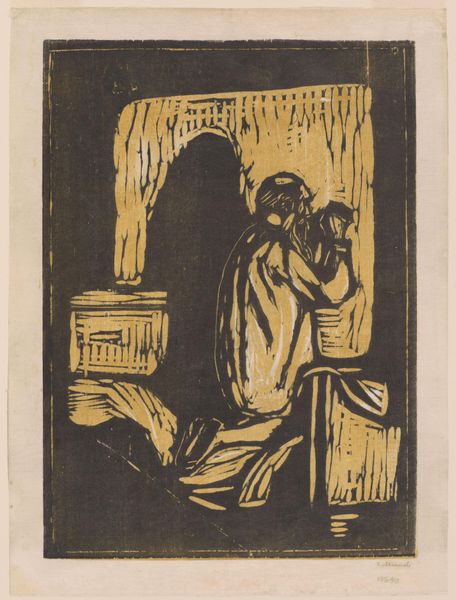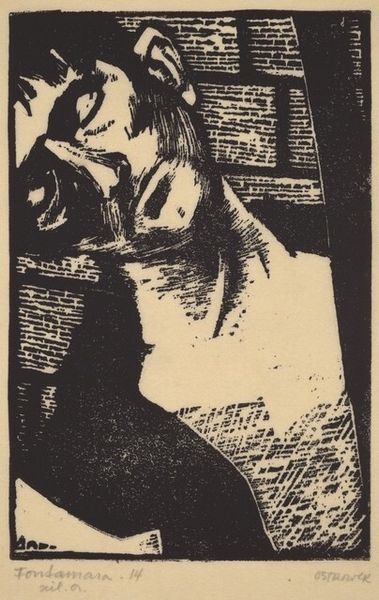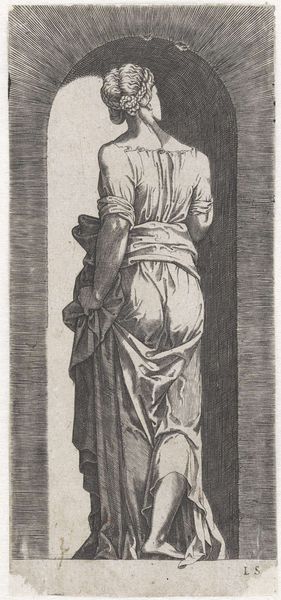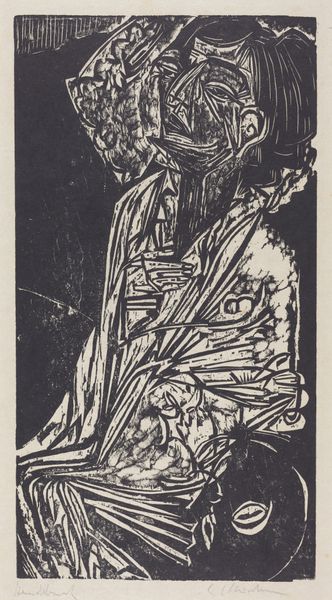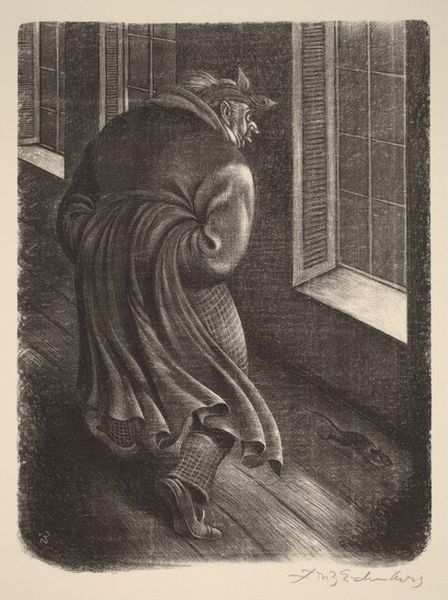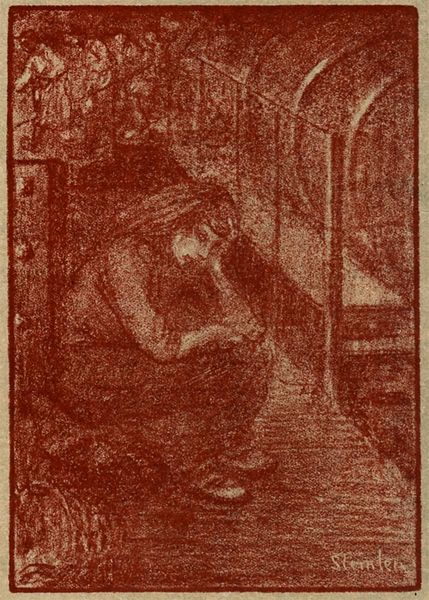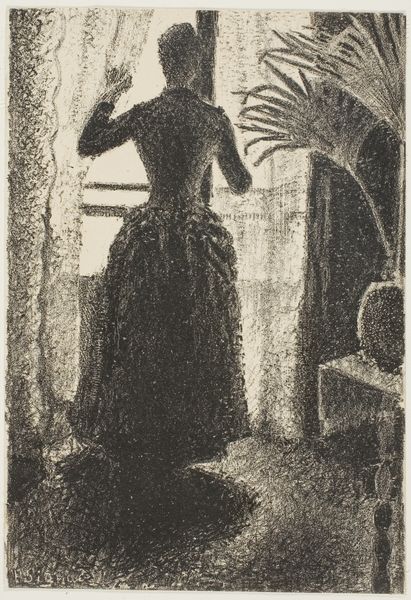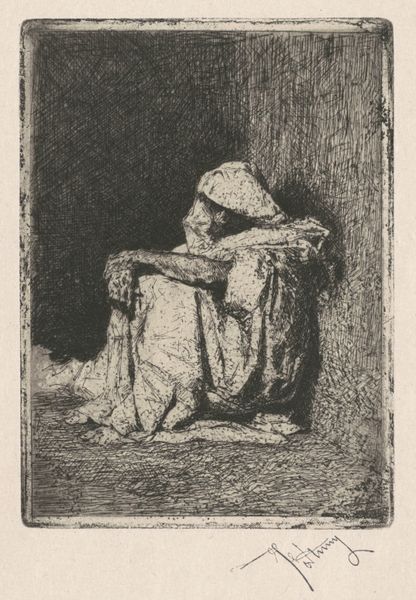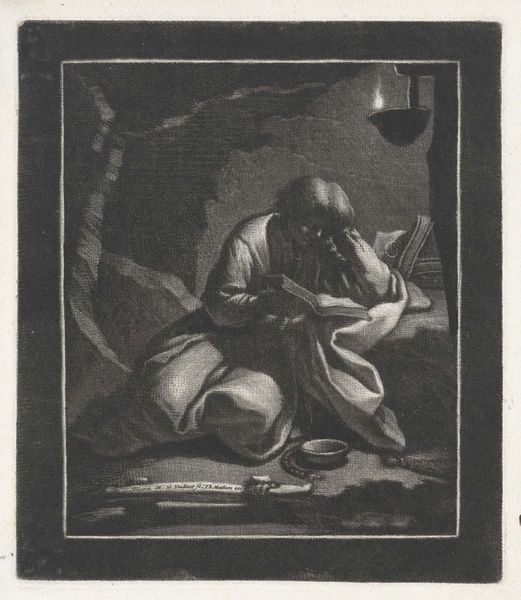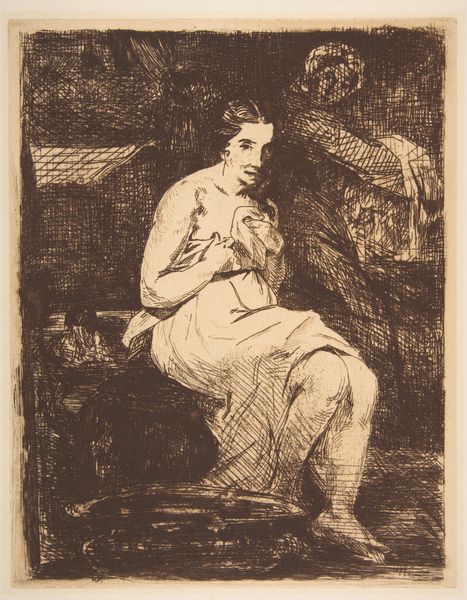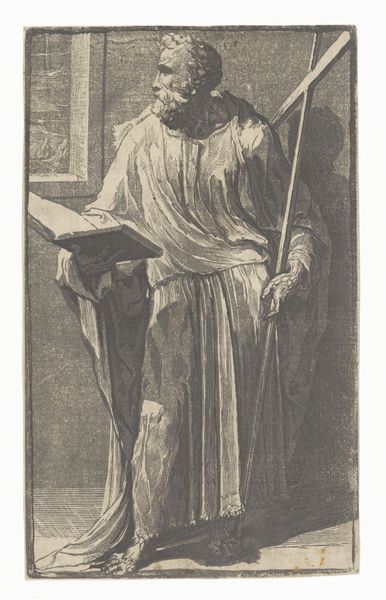
drawing, print, ink, woodcut
#
portrait
#
drawing
#
ink drawing
#
ink painting
# print
#
figuration
#
ink
#
expressionism
#
woodcut
Copyright: Public Domain: Artvee
Editor: So this woodcut print is called "Old Man Praying," attributed to Edvard Munch. The stark contrast between black and white is striking. It gives the piece a solemn and perhaps even despairing mood. I'm wondering, what's your take on this work? Curator: The print's cultural weight hits me first. Consider Munch's position: He operated in a time of huge shifts in social and religious norms. The old man's posture, so traditionally pious, clashes with the increasingly secular world. How do you think this tension between old faith and modern doubt plays out in the imagery itself? Editor: Well, his hunched posture and the way his face is obscured…it almost feels like his prayer is unheard, a lonely act. The woodcut medium itself, with its rough edges, seems to amplify that feeling of isolation. Curator: Exactly! Woodcut, unlike other printmaking techniques, often signifies a return to the "authentic," a kind of handcraft that rejects industrialisation. In this historical context, the use of woodcut to portray an old man praying highlights the changing perceptions around religious devotion in increasingly modern, mechanized societies. Munch forces us to confront a specific cultural tension. Think about how different it would feel rendered in oil. Editor: That's a perspective I hadn't fully considered before. I guess I was mostly seeing personal angst but I'm now noticing a statement about religion. Curator: It's both, and the genius of Munch lies in their interwoven effect, echoing in their reception then and now. Art holds power because it reflects societal dynamics, no? Editor: Absolutely. Thinking about the historical and social context adds such a deeper layer of meaning. Curator: Precisely, now let’s consider the significance of the location.
Comments
No comments
Be the first to comment and join the conversation on the ultimate creative platform.
